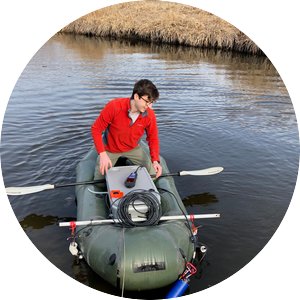LAAS master's student advised by Drs. John Baker and Brent Dalzell
Recently, optical sensors have been paired with mobile sampling platforms and deployed in headwater streams to investigate spatial patterns in stream water chemistry. These flow-path sampling platforms enable the collection of stream water chemistry at a high spatial resolution, allowing for direct measurement of the influence of specific landscape features. The capability of a packraft flow-path sampling platforms has been demonstrated in agricultural headwater streams, but the utility of collecting these data to inform on watershed processes and management has not been explored in depth. The motivation for this research was to understand the utility of measuring stream water quality at a high spatial resolution in headwater agricultural catchments by pairing data collected from the packraft sampling platform with traditional fixed-site water quality monitoring and high-resolution land attribute data to investigate controls on nitrate export.
To compare packraft data with fixed-site monitoring, I analyzed concentration-discharge relationships on seasonal and event timescales and calculated the stability of spatial patterns along characteristic stream reaches within High Island Creek watershed, a tributary of the Minnesota River. By measuring the spatial stability of nitrate concentrations along three distinct stream reaches, I determined that low spatial stability coincides with chemodynamic concentration-discharge relationships and high spatial stability coincides with chemostatic concentration-discharge relationships. The added benefit of flow-path sampling is the ability to identify individual watershed features like wetlands and tributary channels that have important influence on stream nitrate concentrations. Analysis of data collected with this packraft sampling approach showed that small differences in the amount of landscape depressions and the rate of nitrogen fertilizer application were significant terms in statistical models explaining spatial variability in stream nitrate concentrations.
These analyses demonstrate that there is value in collecting stream water quality data at high spatial resolution. This spatially intensive data provided a clearer understanding of the biogeochemical and landscape influences on stream nitrate in a midwestern watershed, and this measurement approach represents a promising tool for both understanding nutrient export in agricultural landscapes and the biogeochemistry of headwater streams in other environments.

Kade Flynn, LAAS master's student advised by Drs. John Baker and Brent Dalzell
